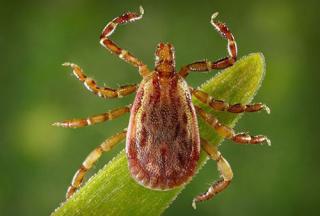High Rate of Tick-borne Disease Detected in Centre County; Use Caution Outdoors This Spring

With the warmer spring weather forecasted for the Centre Region on its way, those who enjoy the great Pennsylvania outdoors should take extra steps to prepare for ticks in the coming weeks.
Lyme disease and other tick-borne illnesses are always a heightened threat during the warmer months in the Mid-Atlantic region, but this year, the Pennsylvania Department of Environmental Protection (DEP) is warning that they are seeing Lyme disease and the rare but dangerous Deer Tick Virus (DTV) at high levels for the first time in multiple locations around the state.
One of the places that tested extraordinarily high for DTV under the DEP Tick Surveillance and Testing Program survey was a very popular outdoors location in Centre County - Fisherman’s Paradise in Boggs Township near Bellefonte.
More than 80 percent of ticks sampled carried deer tick virus at Fisherman’s Paradise, while the statewide infection rate outside of the various hotspot locations is currently 0.6% of ticks sampled. The previous highest DTV infection rate found at a single location in Pennsylvania was 11%, and the highest infection rate reported nationally in scientific literature was approximately 25%.
In relation to this heightened threat to outdoors activities such as hiking and fishing, Tim Schaeffer, Pennsylvania Fish and Boat Commission Executive Director, issued this notice,
“Anglers and boaters should take note of this warning as they make plans for the start of trout season and other adventures on the water this spring, Just as we urge boaters to always wear a life jacket, you can further protect yourself by wearing tick repellant clothing or keeping a bottle of tick repellant spray in your tackle box.”
Initial symptoms of a DTV infection may include fever, headache, vomiting, and weakness. Some people who are infected with DTV experience no symptoms, and therefore infection may go undetected. However, 91% of patients treated for DTV infections develop severe neuroinvasive disease.
Those who exhibit severe disease from DTV may experience encephalitis or meningitis and require hospitalization, with symptoms including confusion, loss of coordination, difficulty speaking, or seizures. About 12% of people with severe disease have died, and approximately half of survivors of severe disease have suffered long-term health impacts.
Here are a list of actions to take to prepare yourself against the risk of tick-borne illness this spring and summer
- Apply tick repellents containing permethrin to clothing and EPA-registered insect repellents such as DEET to exposed skin before entering the outdoors. Reapply as needed according to product label instructions.
- Wear light-colored outer clothing and tuck shirts into pants, and pants into socks.
- Walk in the centers of trails, and avoid wooded and brushy areas with low-growing vegetation and tall grasses that may harbor ticks.
- After returning home, remove all clothing, take a shower, and place clothing into the dryer on high heat to kill any lingering ticks. Examine gear such as backpacks for ticks.
- Conduct a full-body tick check using a hand or full-length mirror, including hidden areas such as the scalp, ears, armpits, belly button, and between the legs.
- Check over any pets exposed to likely tick habitats each time they return indoors.
- If a tick is found attached to your skin, use tweezers to remove it carefully, including the head. Monitor for symptoms and contact your doctor with any questions

